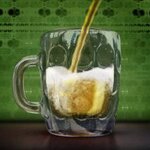Technology

Melbourne, Florida -- Symetrics Industries, LLC announced today an award from the U.S. Army for approximately 300 Improved Data Modems (IDM) for installation on Army aircraft. The contract value will be between US$7 and US$8 million, once final negotiations are completed. The IDM-304 is the Army version of the Improved Data Modems that Symetrics has been delivering to the U.S. Air Force for over 14 years.
Symetrics President and CEO, Mitch Garner stated, "We are absolutely thrilled with this order because it demonstrates the Army's confidence in our ability to execute a long-term, high…

DNA is one of the most popular building blocks of nanotechnology and is commonly used to construct ordered nanoscale structures with controlled architectures. For the most part, DNA is looked upon as a promising building block for fabricating microelectronic circuits from the bottom up. Now a team of researchers at Young propose the marriage of DNA self-assembly with standard microfabrication and lithography tools to form features such as nanochannels, nanowires, and nanoscale trenches. This discovery may open up new avenues for nanofabrication at dimensions not accessible by conventional…

A website dubbing itself 'YouTube for scientists' has been launched, saying the intent is to bring science closer to the people, according to backers Public Library of Science (PLoS), the National Science Foundation (NSF) and the San Diego Supercomputer Center (SDSC).
SciVee allows scientists to upload published papers, as well as a podcast presenting the paper. The groups behind the initiative say they are confident that it will contribute to the widespread dissemination and comprehension of science.
First, we don't see how it's YouTube if you can only upload a podcast and a printed…

Scientists at Pacific Northwest National Laboratory have discovered a way to increase the sensitivity of test strips that will enable creation of a portable biosensor that can address a major concern associated with incidents involving chemical or nerve agents - the need to quickly distinguish between individuals who have been exposed and the "worried well."
The sensor components resemble a pregnancy test strip and a small glucose testing meter. Its development will be discussed by principal investigator Yuehe Lin at the national meeting of the American Chemical Society.
Every disease has…

Researchers who use the TeraGrid, the nation’s most comprehensive and advanced infrastructure for open scientific research, can now leverage the computing resources of a powerful, 2048-processor BlueGene/L system at the National Center for Atmospheric Research (NCAR).
NCAR plans to provide up to 4.5 million processor-hours of BlueGene/L computing annually to researchers who have received computing grants from the National Science Foundation (NSF).
The operational integration of TeraGrid with the BlueGene/L system, nicknamed “frost,” involved extensive preparation by NCAR’s Computational and…

A two-dimensional “paper” made out of titanium-dioxide – also known as TiO2, titania and titanium white – nanowires has been developed. The nanowires have a diameter of 60 nanometers (a nanometer equals one billionth of meter ) and are 30 to 40 millimeters long. The nanowires can withstand temperatures up to 700 degrees Celsius and could provide solutions for a variety of applications, including chemical and water filtration, solar cells, drug delivery and non-woven textiles stable at high-temperature.
“It is unprecedented to have such a pure fiber,” said James Throckmorton, president of…

Special effects in movies have always had a problem: water drops are a consistent size. The one thing that always tips a viewer off in old movies are water drops that look huge next to scaled models.
It hasn't improved much in the last 50 years. Water looks fake and beer is even harder because of the bubbles but computer animation is a $55 billion global industry so it's only a matter of time before someone meets the challenge. A group of scientists think they have done it.
“As you pour beer into a glass, you see bubbles appearing on what are called nucleation sites, where the glass isn’t…

Taking a radically new approach to security and identity protection, University of Houston professors developed the URxD face recognition software that uses a three-dimensional snapshot of a person’s face to create a unique identifier, a biometric.
Shown in government testing to be tops in its field, URxD can be used for everything from gaining access to secure facilities to authorizing credit card purchases. The identification procedure is as effortless as taking a photograph.
URxD leads the pack for 3D face recognition solutions based on the face’s shape, according to the results of the…

The ALMA (Atacama Large Millimeter/submillimeter Array) Project is a giant, international observatory currently in construction on the high-altitude Chajnantor site in Chile, and composed initially of 66 high-precision telescopes, operating at wavelengths of 0.3 to 9.6 mm.
ALMA will be the forefront instrument for studying the cool universe - the relic radiation of the Big Bang, and the molecular gas and dust that constitute the very building blocks of stars, planetary systems, galaxies, and life itself.
Because ALMA will observe in the millimetre and submillimetre wavelengths the atmosphere…

Rotary engines were developed by Wankel of Germany in the 1930s. They never really gained acceptance in the mass market, aside from Mazda in its RX-7 and later models. But a project team says they can take the Mazda rotary engine block and build an aero engine around it that could be retrofitted to all aircraft - and it will change aviation.
The four-stroke piston engine technology used by the majority of planes in general aviation dates back 60 years.
There's nothing wrong in sticking with what works but those motors require 70 to 80 moving parts and still use 100-octane low-leaded (100 LL…